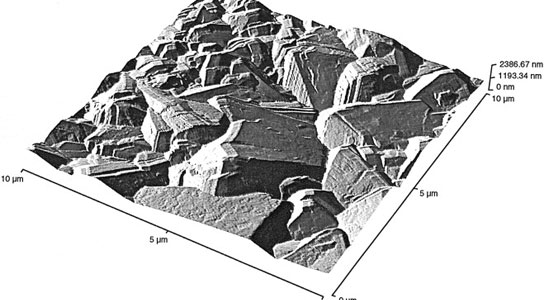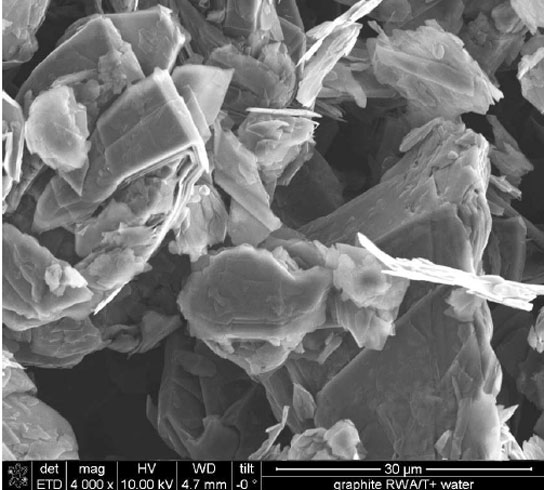Room-Temperature Superconductivity Might Have Been Attained
September 19, 2012

Boron-doped carbon
Material scientists in Germany have claimed that they have discovered a material that can act at a superconductor at room temperature. If this is accurate, then there could be huge potential energy savings since superconductors transmit electricity with zero resistance. Until now, the superconductors work at temperatures of about -110°C and lower.
The scientists have published their findings in the journal Advanced Materials. Pablo Esquinazi and his team at the University of Leipzig report that flakes of graphite doped with water seem to continue to superconduct at temperatures greater than 100°C. Although this might seem like science fiction, the work has been published in a peer-reviewed journal. It still merits further scrutiny, however tentative these results seem.

graphite doped with water
Graphite can superconduct when doped with elements that provide it with additional free electrons. Calcium graphite superconducts at temperatures of up to 11°K and theoretical physicists have predicted that temperatures of 60°K could be reached.
The research team speculated that high concentrations of electrons form at the interfaces between neighboring thin segments of graphite. The samples, when placed in a magnetic field, remained slightly magnetized after the field was removed. This residual magnetization could be attributed by either superconductivity or ordinary ferromagnetism. They varied the strength of the field to see how the magnetization changed. The resulting data was similar to that of the first high-temperature oxide superconductors.
The results remain speculative rather than watertight since the team hasn’t been able to prove that the samples conduct electricity with zero resistance. Also, they haven’t been able to prove that magnetic fields are absent within the material itself, which is a fundamental characteristic of superconductors.
The samples also retained their superconductivity at temperatures up to 400°C. A simple extrapolation of the data shows that the upper limit is about 1,000°C. Esquinazi says that they observed signs of superconductivity up to 500°C but at this point the heat started to degrade, altering their magnetization and making it difficult to observe the transition to a non-superconducting state.
No comments:
Post a Comment